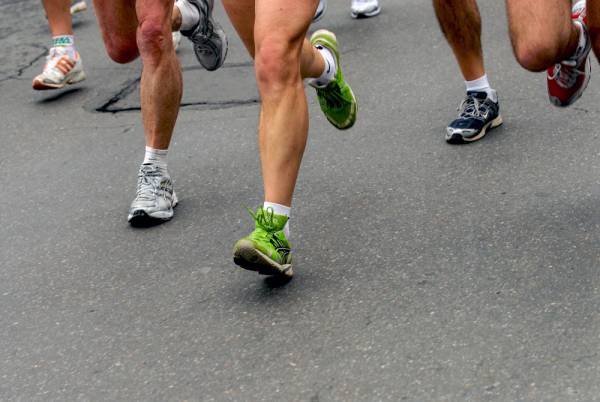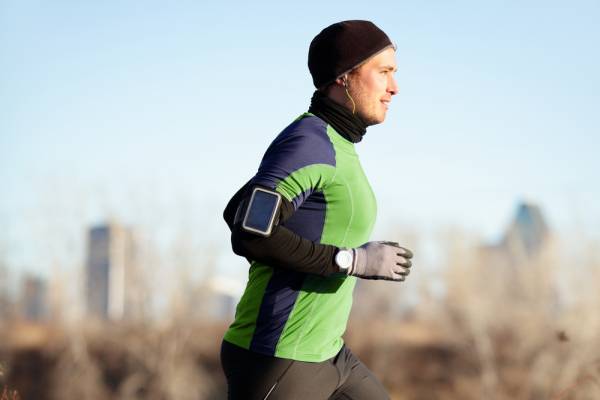Do you want to know the secret to becoming a better runner? Become more efficient. That’s it. Overly simplified, yes, but that is it.
An Example of Excellent Running Technique
All that training you are doing develops efficiency in one way or another. For example, those countless hours of training work to better your heart’s stroke volume, teach your body to efficiently metabolize fuel, and adapt the nervous system to fire your muscles in the most effective manner possible. The foundation for improving as a runner revolves around the idea of maximizing efficiency.
There is no better place to find excellent running technique than at the Ironman World Championships where even the tiniest inefficiencies can make or break the race. The 2014 winner for the women, Mirinda Carfrae, is arguably one of the best runners in the history of the event.
Mirinda managed to put the pedal down in the marathon to close down more than a fourteen-minute gap and bring home the victory. Her run exemplified so many aspects of excellent running mechanics. Have a look:
From the Bottom Up
When you watch Mirinda run it is smooth and with little wasted motion. You are watching someone with a kinetic chain that is totally optimized – no weak links. From her feet all the way up to her arms and shoulders, the motion flows with grace and control.
How do you get there yourself? Let’s take a look at the most important areas you can work on right away.
Feet: Ground Contact Time and Vertical Oscillation
In running, you only have one point of contact at any time, making it the primary battleground for controlling your forward momentum. Two primary factors come into play at the foot: ground contact time and vertical oscillation.
Ground contact time (GCT) is the amount of time it takes your foot to strike and lift off, and it can have a profound impact on your overall running ability. A study in the Journal of Applied Physiology found that even a fifteen-millisecond improvement in GCT resulted in a 3% improvement overall.1
“Considering that you want to convert as much gravitational energy into forward motion as possible, energy wasted as vertical motion can pile up in a hurry.”
That may sound minuscule, but for a runner able to do 10km in forty minutes, it would result in a one-minute improvement. And for the marathon runner? It turns into seven whole minutes. That’s no laughing matter.
Vertical oscillation (VO) is the amount you bounce up and down with each step. Considering that you want to convert as much gravitational energy into forward motion as possible, energy wasted as vertical motion can pile up in a hurry.
To put numbers to it, let’s look at a 150-pound athlete running 10km. If that runner’s center of gravity rises and falls two inches with every stride, the amount of work done at the end of the race would be equivalent to raising 84 tons one foot high. If you reduce that to only one inch of VO, that number becomes 42 tons. That is a serious amount of energy savings over the course of a race.

How to Optimize GCT and VO
Start with the foot strike. There are varying opinions on what part of your foot to land on, which will be left alone for now. What matters most is striking below or just in front of your center of gravity to minimize braking, GCT, and VO.
RELATED: What Forefoot Running Actually Means
The easiest way to ensure proper foot strike placement is to start with a good body lean. Take another look at Mirinda as she runs. What a lean! At the start of your next run try this drill to get there yourself:
- Stand tall and lean forward, bending from the ankles. The rest of your body should be aligned (straight line from ankle to your ears).
- Lean until you almost fall over (keeping you heels down). When you reach this point you will instinctively pick your feet up as you would to run. This is the amount of lean you want to shoot for throughout your run.
With body lean in check, adding a quick cadence (turnover) is the next step in keeping GCT and VO low. A turnover of 180-200 strikes per minute is optimal. You can measure this with a metronome app on your phone or with one of the many running watches on the market.

When increasing cadence, one area often overlooked by runners is the swing phase of the running gait (after you toe off). Instead of letting the lead foot trail out way behind the body, mindfully visualize lifting your heel to your butt. This shortens the lever arm of your trailing leg, which in turn reduces the amount of torque required to move the leg back in position for the next foot strike. In short, you save valuable energy.
Hips and Glutes: Improving Strength and Stability
Moving on up the chain is where we find a common weak link: the hips and glutes. It sounds cheesy, but with running, your hips really don’t lie.
Running is essentially a long set of alternating single-leg hops (or partial single-leg squats). If you do not have the strength in the hips and glutes to properly stabilize the motion throughout the duration of your run, you will not only be inefficient, but you will also likely find yourself injured at some point. Improving hip strength and stability needs to be high on the priority list if you want to improve as a runner.
Returning to the same study mentioned above, the researchers concluded that the inclusion of explosive strength training resulted in improved running economy both from minimizing wasted motion and from an increased ability to apply power quickly.
“Improving hip strength and stability needs to be high on the priority list if you want to improve as a runner.”
For this reason, it is a great idea to include two or three workouts each week that have an element of explosive strength training. This can take the form of plyometric box jumps, single-leg hops, squats, and much more. Throw them in the mix. Your body will thank you later and you will be a much stronger, more well rounded runner.
Arms, Shoulders, and Spine: Staying Fluid and Relaxed
From the hips up, everything should be fluid, relaxed and contributing primarily to forward motion. Any excess tension above the waist is wasted energy. At the shoulders, you want to see the shoulder blades pulled back, relaxed, and together with “heavy” low shoulders. It should feel almost like you have a heavy weight pulling down on your elbows.

The elbows should drive straight back with each stride, but rather than using extra energy to swing your arms, try letting your spine rotate fluidly, almost like you are rotating your ribcage toward the front with every stride. You will find that it will do so quiet easily with stable hips and that it will drive your arms straight forward with little extra energy.
RELATED: Size Doesn’t Matter – But Your Technique Does (For Running, That Is)
And last but not least, keep your hands and face relaxed. A helpful visual is to pretend you’re holding a potato chip between your thumb and pointer finger and trying not to break it.
So what are you waiting for? Try it out. I bet you you’ll be a better runner when it’s all said and done.
References:
1.Paavolainen, L. et al. “Explosive-strength training improves 5-km running time by improving running economy and muscle power.” J Appl Physiol. 1999 May;86(5):1527-3.
Photos courtesy of Shutterstock.






